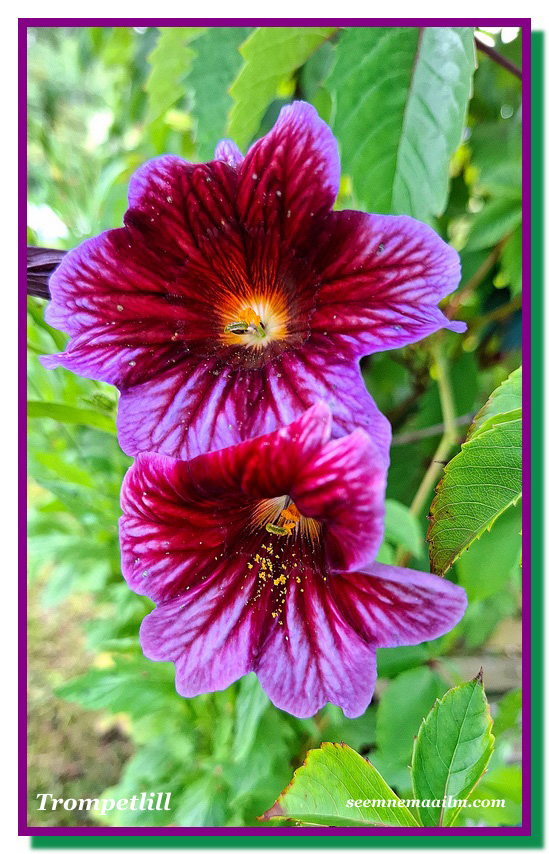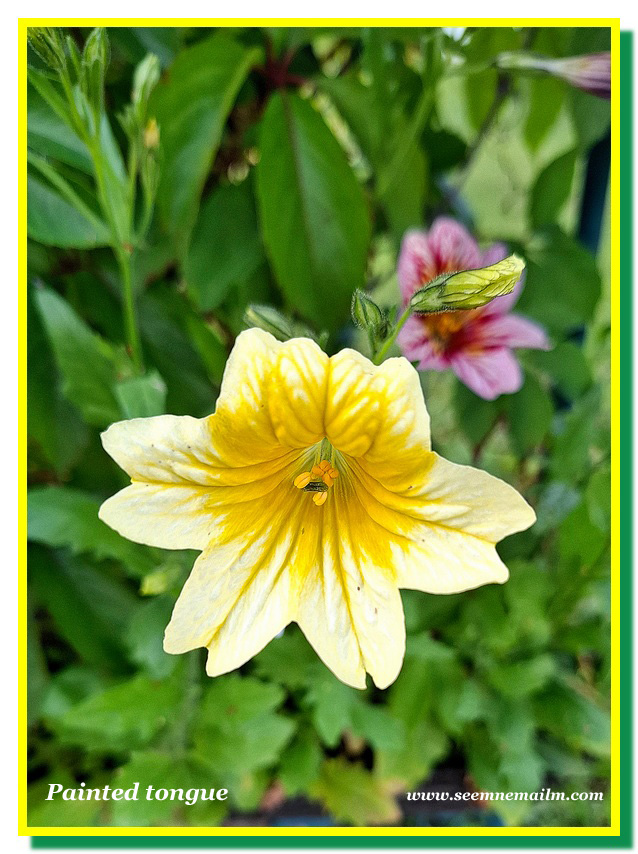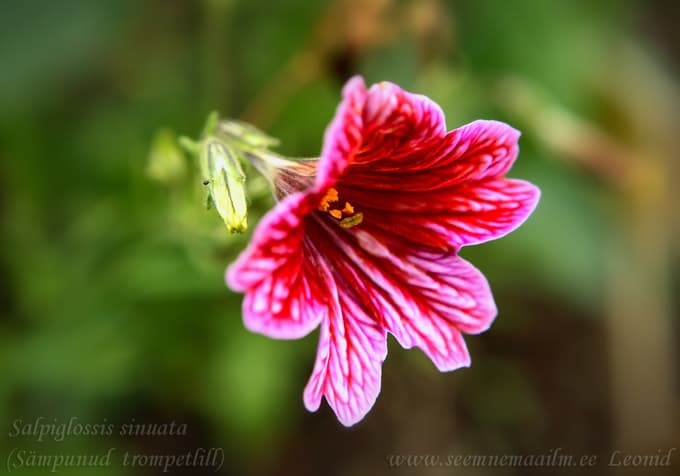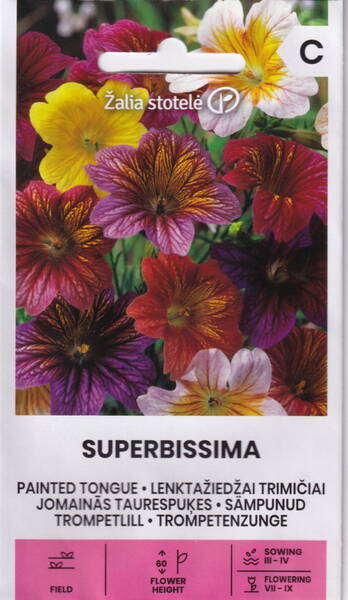A sea of flowers in the flowerbed and in the bouquet!
One of the most exotic annuals. The plants are branched and bloom profusely and for a long time.
Flowers of bright colors with original contrasting veins are good both in bouquets and in landscape design.
To promote better tillering, pinch the tops of young plants.
1.0 g = 4000 seeds.

Salpiglossis - Salpiglossis sinuata.
Name: comes from the Greek words " salpinx " - pipe and " glossa " - tongue, which explains the shape of the flower.
Description: The genus contains about 18 species, distributed in South America (mainly in Chile).
The flowers are large, funnel-shaped, and come in a variety of colors, with striking combinations of shades and hues. 1 g contains 4,000-6,000 seeds. Blooms from June to October.
Bears fruit. The fruit is a two-celled, oval capsule containing small seeds that remain viable for 4-5 years. Cultivated since 1820.
Location: Grows best in sunny, sheltered locations. Does not tolerate excessive waterlogging, drought, or frost.
Soil: Requires areas with deep, fertile, permeable soil.
Care: Feed several times during the summer and keep the soil moist.
Propagation: by seeds, usually sown outdoors in spring or fall. Seedlings are thinned to 20-30 cm apart.
For seedlings, seeds are sown superficially in March, pressed into the soil, covered with glass and shaded with thick paper.
Seedlings emerge in 2-3 weeks, during which time the crops are kept at +15 to +20°C. Seedlings are pricked out once into rows at 5 cm intervals.
Plant in the ground in early June, when the threat of frost has passed, at a distance of 25-30 cm. It does not transplant well.
Use: in group plantings, flower beds.
It is not recommended to plant Salpiglossis far from the viewpoint, otherwise the variegated colors will merge into a blurry spot.
It's best to plant it in a small group near a path. Cut flowers last quite a long time in water.


Eng.: Painted tongue, paisley flower, velvet trumpet flower.












